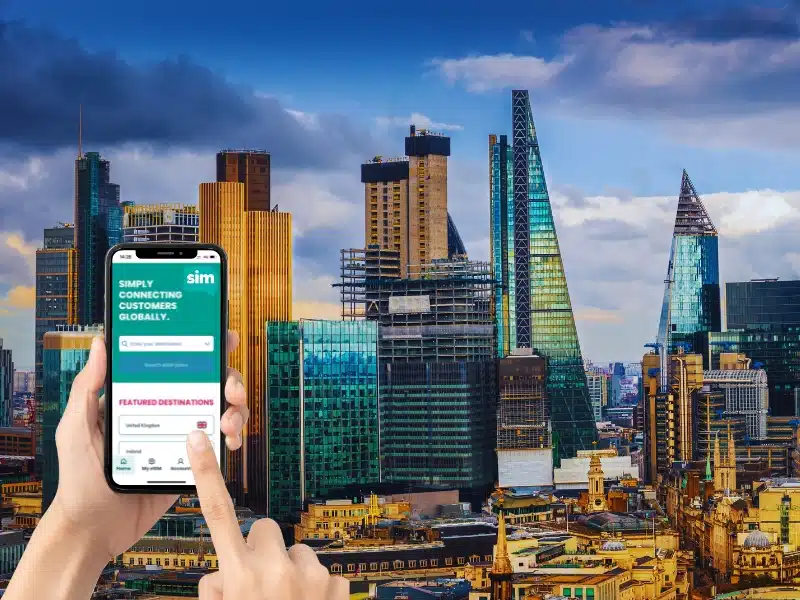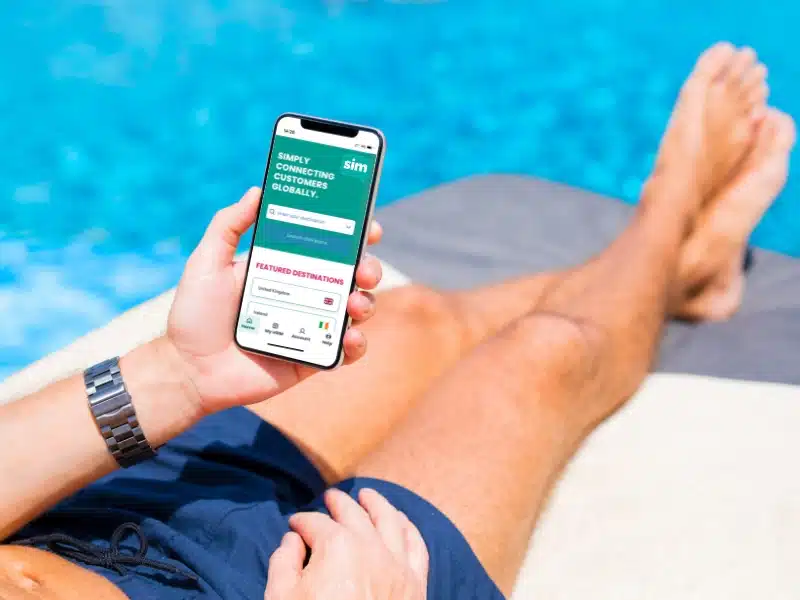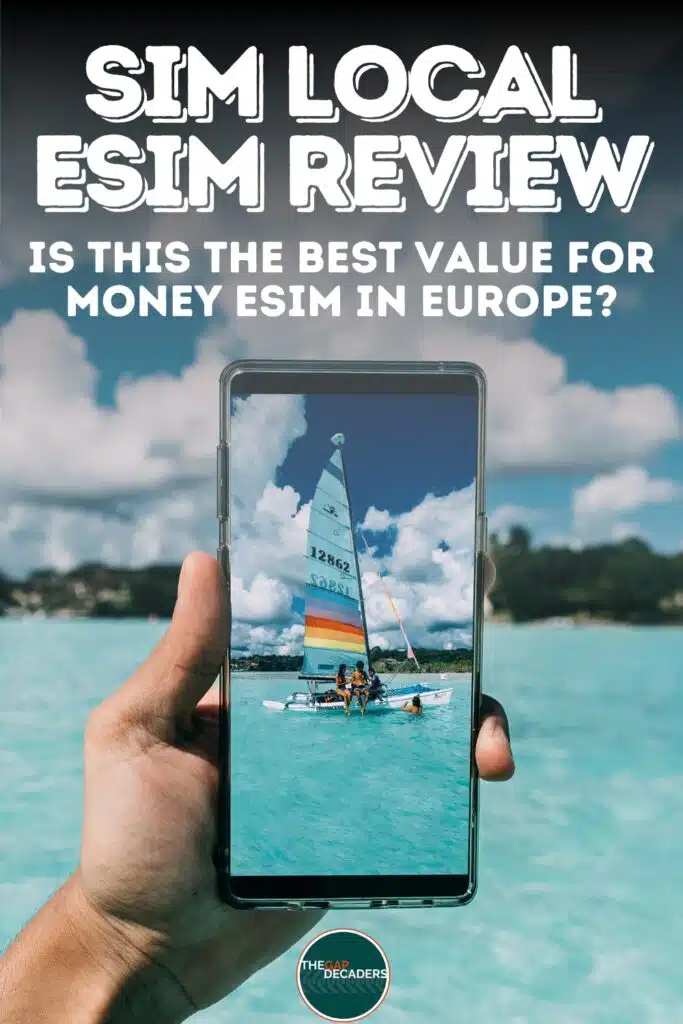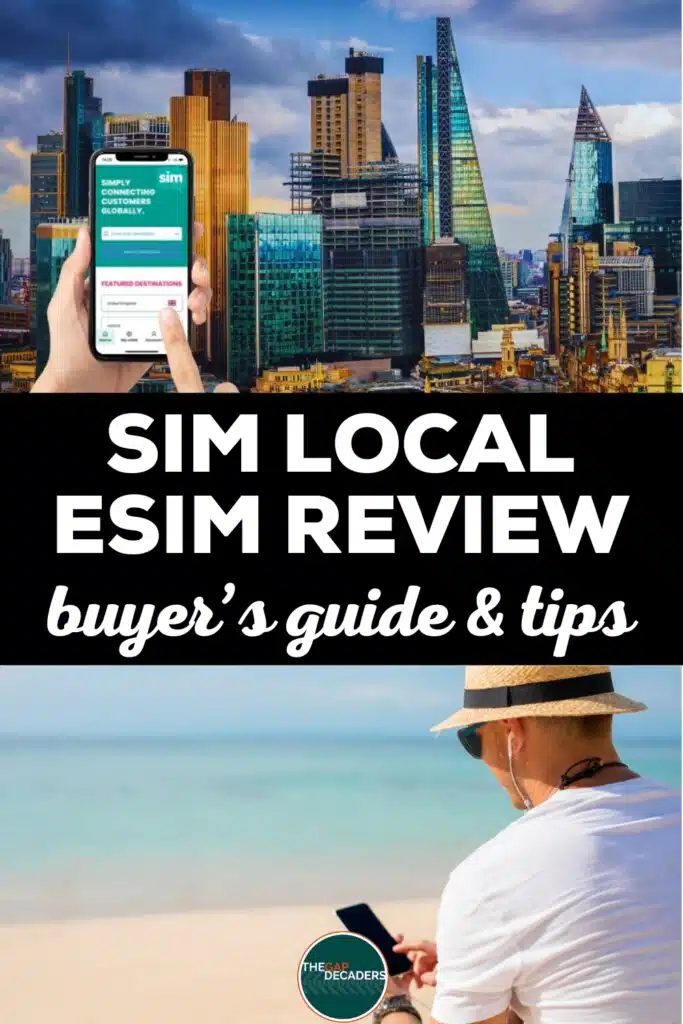This post may contain affiliate links, from which we earn an income. Click here to read our affiliate policy.
Planning a trip to Europe, or anywhere else globally, and considering purchasing an eSIM for mobile internet access?
We’ve rigorously tested SIM Local eSIMs throughout Europe, alongside various other eSIMs, local SIM cards, and Cloud SIM devices over the past few months. Our extensive experience allows us to provide you with a comprehensive and unbiased review.
In this SIM Local eSIM review and guide, we’ll address all your commonly asked questions, explore the usage of SIM Local eSIMs in Europe, and look at whether SIM Local’s eSims plans are good value for money.

TL;DR? Get the basic SIM Local info here…
Who is SIM Local?
Founded in 2011, SIM Local has been traditionally known for its airport stores across the world which traditionally offered local physical SIM cards to travellers arriving at or departing terminals.
Now, Sim Local offers eSIMs for international travel that can be purchased online or via the app instantly and have you connected to a local network of a country of your choice in under a couple of minutes.
Their eSIM plans give access to local networks for data, calls, and texts, saving you the hassle and expense of using your own SIM card on a different continent.
SIM Local says its mission is ‘Help travellers stay connected and avoid roaming fees.’
How does SIM Local work?
SIM Local can be accessed on the web or via the SIM Local app. Head online (so you need some sort of connection to get started) and select the country or region to which you’re travelling.
SIM Local offers eSIMs in over 190 countries, plus six regional eSIMs for Africa, Asia, the Caribbean, Europe, North America, and South America, and a global eSIM for the serious and business travellers out there.
You can choose the amount of eSIM data and the number of days required from the eSIMs available and make your purchase. Most countries have eSIM plans from 1GB to 20GB, valid from 7 days to 30 days, and some offer 50GB plans.
Bigger data packs for regions can go up to 100GB for 180 days. I am using an Orange Holiday EU 30 GB data pack for Europe right now.
You can also choose from various providers, including Orange Holiday, which covers a lot of destinations, and local providers that are country specific. In short, there’s a SIM Local plan to suit all situations and needs.
Once purchased, your eSIM can be installed and activated directly in the SIM Local app. You don’t need a QR code or another device to read it, making this one of the easiest and most intuitive eSIM activations I’ve ever experienced.
Once installed, check your settings (make sure data roaming is turned on), give the eSIM a name, and you’ll have internet. There are a lot of help documents that talk you through the setup, and if that doesn’t help, you can chat with SIM Local live via the app or send them an email.
I tried their online chat so I could share my experience, and they were quick and helpful in their response.

How much does an SIM Local eSIM cost?
It can vary a lot depending on the country and the base price of data in the country or region, the amount of data you need, and the validity period. Bigger data packs over longer validity periods are usually more cost-effective.
We regularly look at other eSIMs plans and deals, and our research tells us that SIM Local is very competitively priced, especially if you’re looking for a regional eSIM to cover a number of countries.
Is SIM Local safe?
Can SIM Local be trusted? We’ve been using SIM Local with no issues and have felt comfortable using a credit card to pay for our eSIMs through their app. You can also check out their excellent 4.8 rating on Trustpilot.
If you’re worried about security when using an eSIM, consider installing a VPN (Virtual Private Network) to safeguard your privacy and ensure the security of your online data.
We recommend NordVPN due to its extensive selection of international servers, user-friendly interface, and competitive pricing.
How good is SIM Local coverage?
SIM Local’s coverage relies on the data service provider. Because they work with local and well-known providers in each country, coverage is generally excellent. SIM Local will connect to 4G, LTE, and 5G depending on the carrier and for the latter, your phone’s capabilities.
Our SIM Local Experience
I have to confess, I had my doubts about eSIMs and half-expected them to be unreliable. However, I’ve been pleasantly surprised by SIM Local and find their offering to be very competitively priced.
Their website and app interfaces are user-friendly, with clear guides and help documents. The eSIM itself has performed brilliantly, functioning across multiple countries without a blip.
There are a couple of things I wish I’d known before buying my first SIM Local eSIM;
Click the button below to buy and use our referral code and get 20% off your purchase. Just type in AFFSIML20 when prompted.
What are the benefits of SIM Local eSIMs?
Is there a downside to using eSIMs?
If you balance the cost of a SIM Local eSIM card against a local regular SIM, an eSIM is always going to be more expensive gigabyte for gigabyte.
However, for us, the convenience of staying connected as we cross borders and move around different countries – over 20 in the last year – far outweighs the price difference, and SIM Local pitch their pricing as close as possible to local SIM cards.
We don’t really see any downside!
What is an eSIM?
A regular SIM (Subscriber Identification Module – who knew?) is a physical bit of plastic containing microchips that enable your phone to make and receive calls, send and receive text messages, and access wireless internet.
In 2018 the first eSIM was launched and Apple started adding the technology to their iPhones, and today all major phone manufacturers support eSIMs.
Can anyone use an eSIM?
Because this is fairly new technology, only newer mobile handsets can accept an eSIM. So, your device must be carrier-unlocked and eSIM-compatible.
Most recent Apple iPhones and iPads are compatible, as are newer Samsung and Google Pixel phones. Check this guide to SIM Local compatible handsets before making a purchase.
Why do I need an eSIM?
Whether you’re a holidaymaker, a seasoned globetrotter, a backpacker, a business traveler, or a digital nomad, staying connected to the internet while you travel is likely a priority.
Having access to mobile data through a travel eSIM simplifies navigating unfamiliar territories and overcoming language barriers. The ability to check your bank balance, make online reservations, engage in video calls, or research your next destination enhances the ease of life on the go.
For digital nomads, a reliable internet connection is crucial. Working remotely for at least three days a week entails tasks such as uploading videos, participating in conference calls, downloading images, and heavily utilizing the internet. Thus, access to data becomes vital for business success.
If you resonate with this lifestyle or if staying connected is imperative for other reasons, you know the hassle of seeking out decent WiFi at a reasonable cost and establishing a connection while on the move.

What other options do I have to get internet?
There are other options to get online internationally, but we have tried them all and keep coming back to the eSIM.
Use your existing provider
Practically all contemporary smartphones seamlessly integrate with the global mobile network infrastructure, and most prominent carriers in North America, Europe, and the UK provide international SIM data plans, ensuring connectivity upon arrival in foreign lands. However, the cost can be steep!
Regardless of your home country, ‘Roam Like at Home’ plans typically come with fair usage restrictions that limit your monthly data allowance to a modest amount. You may even risk disconnection if your provider deems you a ‘permanent traveler.’
Buy a local prepaid SIM card
Purchasing a local SIM card presents a viable solution, yet it comes with limitations. Opting for a local SIM is practical when staying in a single country for a week or longer, rather than when constantly moving between countries.
Moreover, acquiring a local SIM isn’t always convenient, particularly if you’re embarking on overland journeys or exploring remote areas off the typical tourist routes.
Lastly, procuring prepaid data SIMs can be excessively costly, especially in the well-developed regions of Western Europe and the United States.
Get a portable WiFi device
With a portable WiFi device or hotspot, you retain your phone number and can tether or connect to the device no matter where you are. These pocket WiFi devices function similarly to home routers, enabling multiple devices to connect simultaneously.
Unlike traditional methods that rely on internet service providers, these WiFi devices utilize cloud SIM technology, eliminating the need to purchase a separate SIM card as it’s already integrated. However, they are also among the pricier options for accessing the internet.

Looking for more travel inspiration? Check out these top posts…
16 of the Best Travel Destinations in January
Our 60 Before 60 Travel Bucket List
The 16 Best Second Cities in Europe You Shouldn’t Miss
Adventure Travel Bucket List: 15 Epic Experiences in Europe
Travel Trends 2026: The Year of Mindful Escapes and Meaningful Journeys
The Ultimate Europe Travel Bucket List: 15 Classic Experiences to Inspire Your Next Trip
Love it? Pin it!








